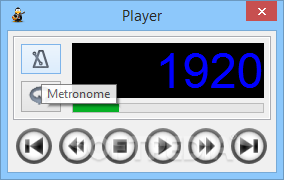

The root is found on the low E string on the 5th fret. For example, let’s take the first A7 chord. To change the key of each of the following chords take the lowest root and change its position on the fretboard while maintaining the same chord shape, just transpose all of the notes. The root of each of the following chords is highlighted in green. In the blues chord chart below I decided to include the positions of these chords in the key of A, D, and E so that you can pick and choose which chords you want and then apply them to the 12-bar blues progression (I’ll also discuss a few blues progression examples). The following list of 12 blues chords are all in the key of A. The important thing to note is that blues chords commonly use 7ths, 9ths, and 13ths, however, this is not a rule set in stone. You can add certain notes to an existing blues chord to give it more flavour, you can change the key, etc. There are a ton of possibilities and variations to blues chords.

That being said, true blues chords aren’t restricted to just 7th chords, many times 9ths and 13ths are also used to provide that bluesy sound. However as long as the root, third, and 7th are present, then you still have a 7th chord. For example, in some cases, there may be no perfect fifth or you may add a 6th, etc. Sometimes you may see a variation in the presence of these notes. These types of chords are typically made up of 4 notes: Many blues chords are made of what are called 7th chords. They are just regular major chords applied to a blues progression. However, these chords aren’t necessarily blues chords per se. For example, if you want to use all major chords you can simply take the chords A, D, and E, plug them into the 12-bar blues formula and voilà, you have a blues chord progression. You can play the blues with really any type of chord. Therefore, knowing which chords will produce a “bluesy” sound will help you further advance your blues playing skillset. Learning the blues can truly open up a huge range of musical possibilities. Rather this post is all about highlighting great sounding blues chords that you can add to your guitar playing toolbox. This post however, isn’t going to go overly in-depth into the history and advanced structure of the 12 bar blues. As you can see by counting the measures, they add up to 12, hence the 12-bar blues. Once you get to step 6, simply rinse and repeat.

Begins on the I also known as the root or tonic - played for 4 measures.That said, the 12-bar blues progression essentially uses the following formula: To help better understand the following example, it's a good idea to study guitar scales basic guitar chords. This progression is made up of 12 measures and is based on a key's I-IV-V chords. And if you want to learn more about playing blues chords, this is a fine place to start.īlues music generally has a distinct sound, and many recognize it by the well-known 12-bar blues progression. If you love the blues, then this article about playing great-sounding blues chords will help you love the blues even more. King, Elmore James, Buddy Guy, and John Lee Hooker - as well as the artists they inspired, like Michael Bloomfield, Eric Clapton, Stevie Ray Vaughn, Rory Gallagher, and others. Over the decades the blues developed into a uniquely American art form, and brought us classic blues artists like Muddy Waters, Robert Johnson, B.B. Officially, it originated in the Southern United States toward the late 1800s, but its roots extend further into the past. Sipp” Coleman, of McComb, Missįrom the Rolling Stones to Led Zeppelin to Jimi Hendrix and even Pink Floyd, the blues has provided the foundation and inspiration for much of today's music.

īy Cody - Musician Tuts (adapted by Harmony Central)Ĭourtesy Photo: Castro “Mr. They're beautiful and you'll want to learn them.


 0 kommentar(er)
0 kommentar(er)
